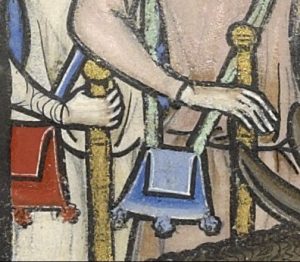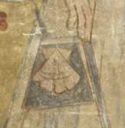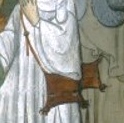I was quite excited when Lady Esa inghean Donnchaid announced the Atlantian Persona Development Challenge, as I love challenges that give people an opportunity to expand their in-depth historical knowledge while creating things! You can read more about the challenge itself here, as well as see the displays as people complete items.
The challenge itself spans the spring-to-fall reign (April 2 to October 1) and requires that four objects be completed over the time. While the idea is to display at four events (two Coronations, Crown, and Pennsic), the projects can be works-in-progress until the final event.
For this challenge, I am focusing on my 7th-century Northumbrian Anglian persona. I have recently been doing a research deep-dive into Anglian garb, so I hope to use this as an opportunity to expand my wardrobe in a more accurate manner.
This page is my landing page for my entries. Below, you will find a description of each item I plan, with regularly updated pictures and links to longer posts (once they exist!).
Item 1: Winingas
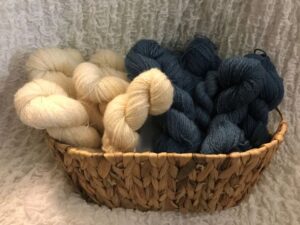
Winingas, or leg wraps, are commonly seen in Migration-era Scandinavian men’s outfits (“Viking”) as well as later Saxon men’s garb (11th century). While there is little physical evidence regarding any leg coverings in 7th-century England, men must have covered their legs with something, and winingas are as likely as anything. There’s also a possibility that women wore winingas under long skirts in cold weather. While I primarily do women’s garb, I do have plans to make a masculine kit, and winingas will be useful in cold weather for either.
For weaving, I plan to use the Romney fleece that I processed in 2019 and spun in 2020. In 2020, I dyed half of the yarn with indigo (which is chemically indistinguishable from woad). I plan to use the undyed as the warp and the dyed as the weft. For weaving, this blog post may end up being quite useful.
Item 2: Ring Pouch
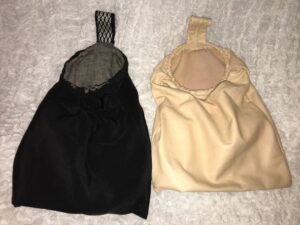
I made a ring pouch for my fate garb, but it doesn’t go with most of my garments. For this, I would like to model the pouch off historical ones that had a leather outside and weft-faced lining.
Item 3: Dress
In my Anglian garb deep-dive, I’ve been hypothesizing several different dress constructions. I plan to make one for this project.
Item 4: TBD
I have several ideas for my final item, but I will reveal that as I progress on the other items.
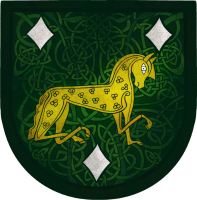
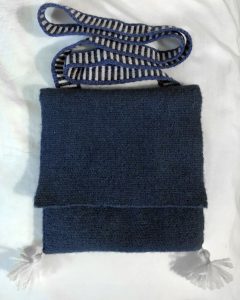
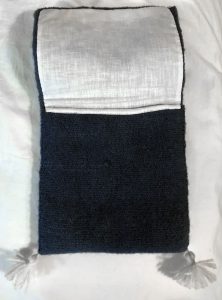 I made this bag for Lochmere Midwinters in January 2019 as part of their Pilgrim Bag competition. The picture shows the fabric a much darker blue than it is in real life.
I made this bag for Lochmere Midwinters in January 2019 as part of their Pilgrim Bag competition. The picture shows the fabric a much darker blue than it is in real life.